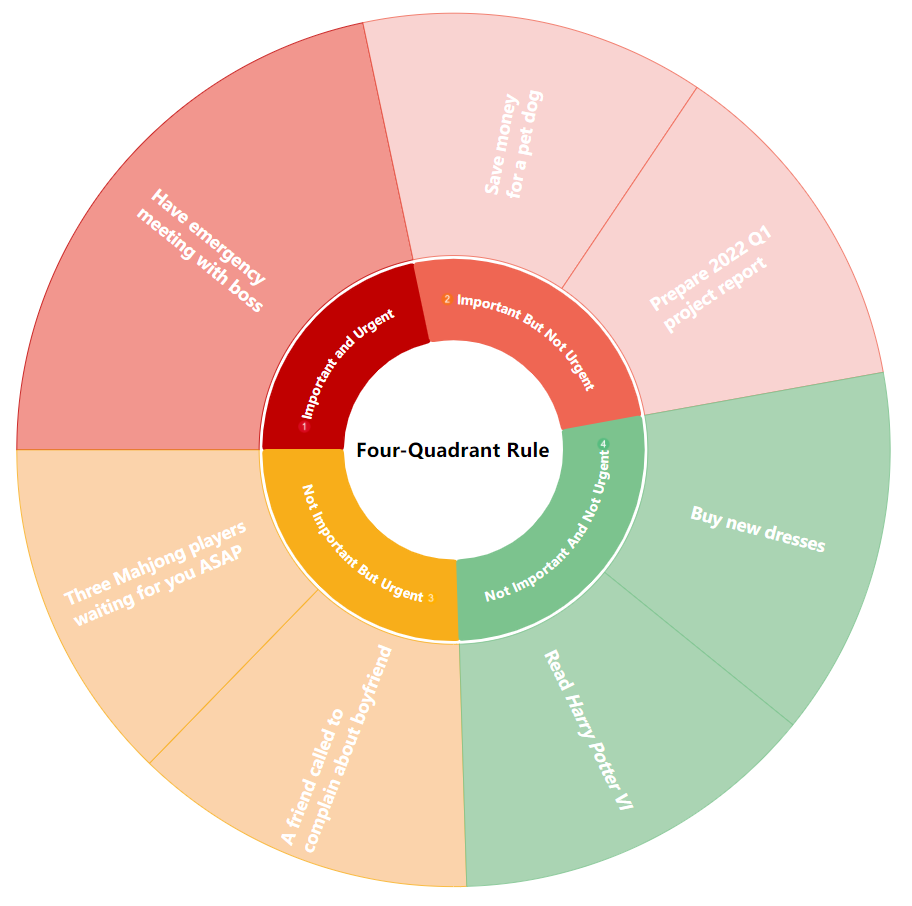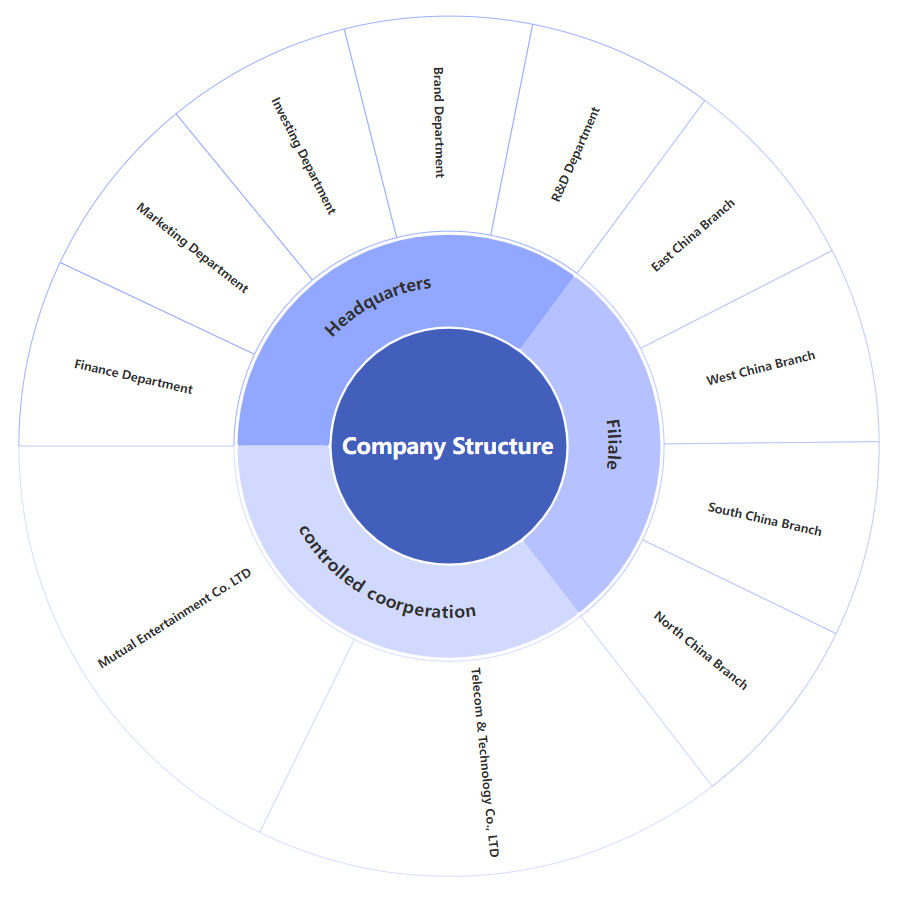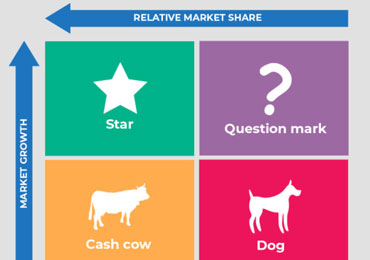Sunburst Chart:
Explained with Examples & Templates
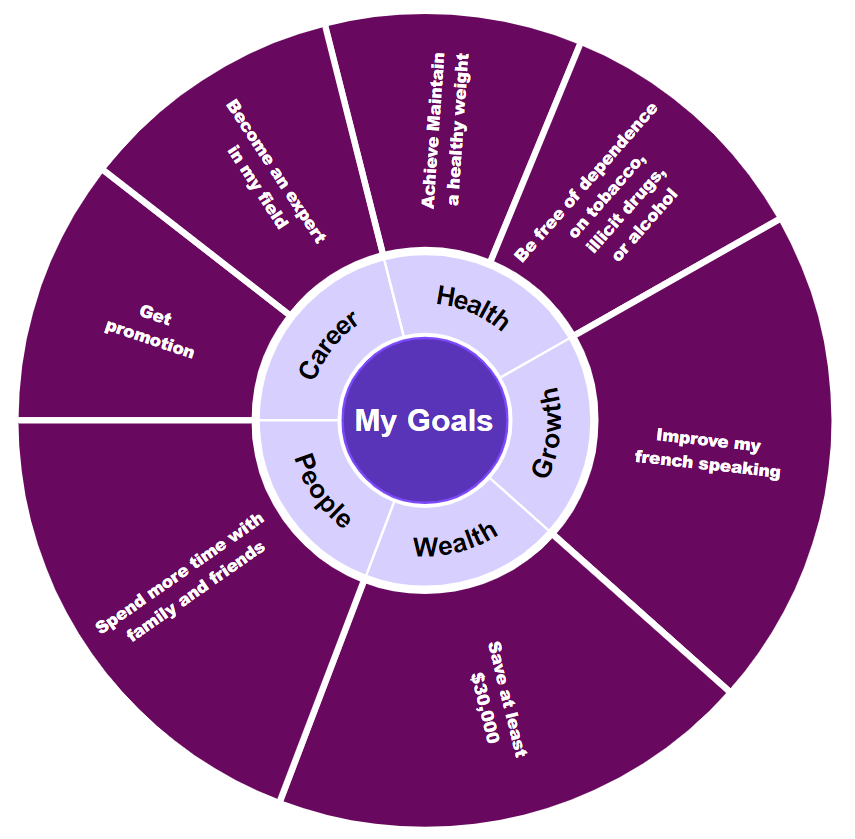
1. What is Sunburst Chart?
In many scenarios in work or study, the pie chart may be one of the most commonly used charts. It can be used to display the contents of one certain category.
However, when dealing with multi-levels data, pie charts are not enough. At this time, the emergence of the sunburst chart solved this problem.

Sunburst Chart — also known as Ring Chart, Multi-level Pie Chart, and Radial map — is typically used to visualize hierarchical data structures.
A Sunburst Chart consists of an inner circle surrounded by ringsof deeper hierarchy levels. The angle of each segment is either proportional to a value or divided equally under its parent node.
2. 3 benefits of Sunburst Chart
According to above, three benefits of sunburst chart can be seen:
First, the high-quality work comes with refined content. The content of several pie charts can be expressed in one sunburst chart. It can shorten the work time, avoid useless effort, and improve the quality of the work. At the same time, refined content can also stimulate more thinking. The sunburst chart connects the content of all aspects and levels into a whole, gives us chance to overlook things.
Secondly, the sunburst chart makes the focus more obvious. Whether it reflects the data in proportion to each part, or uses different colors, you can always find the key point. Based on this, we can find the focus of the analysis. Reasonable decisions can be made only by getting to the core of the problem.
Finally, is the inclusiveness of the sunburst chart. In many charts, you must type at least two numbers to form a chart. However, in actual work and study, many expressions do not require numbers. This makes people normally not consider making charts when they encounter textual expressions. Sometimes, only using words to describe the relationship between things can sometimes not be very good. At this time, the inclusiveness of the sunburst chart is reflected. Because it mainly reflects the relationship between multiple levels of content, even if there is no data, the role of the sunburst map has not been diminished at all.
3. How to make it?
Creating a sunburst map requires you to have a clear mind. What are the levels and contents of this matter? Just like a tree has trunk, branches, and leaves, distinguishing everything is the most important preparation before production. Once the idea is complete, the production process will become very simple.
Using Excel:
1) Type and select your data, note that you need to type the parent node's data to the far left. And if you don't have numbers in your content, you also need to add the proportions of each part of the content in the last column.

2) Click Insert > Insert Hierarchy Chart > Sunburst.

Using EdrawMind:
1) Choose a Mind Map in Template Categories, create your mind map.
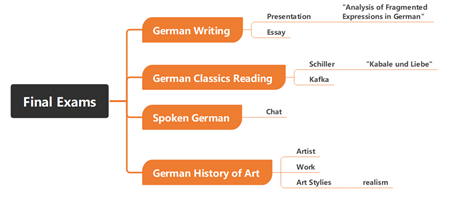
2) Go to Right Panel>Layout>Sunburst chart. One click switches to it. Use shortcuts: press Enter to add topics, press Tab to add subtopics.
3) Style it with colors, themes, and cliparts.
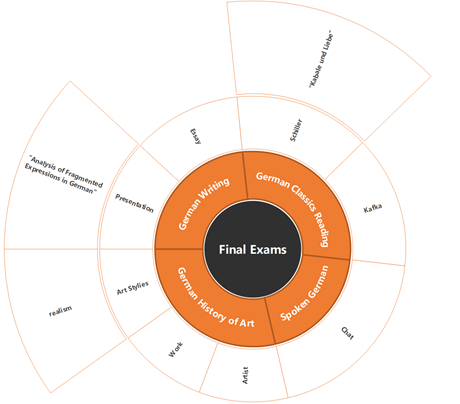
4. Examples
Now that you know how to make a sunburst chart, here are a few examples to help you think about what else you can do with a sunburst chart.
(1) The Four-Quadrant Rule
The four-quadrant rule is an important method of time management theory. Manage time efficiently by distinguishing things between important and urgent.
This template prioritizes four categories of things. After correctly distinguishing the type of things, we should follow the priority to deal with the transaction. Note that important but not urgent things have priority over urgent but not important things, because important but not urgent matters have a significant impact on our lives, the existence and development of individuals or businesses and the surrounding environment establishment and maintenance are of great significance.
(2) Industry Chain
The sunburst diagram can also be used to show an industry chain. The essence of the industry chain is to describe the structure of an enterprise group with some internal connection. It is a relatively macro concept with two-dimensional attributes: structural attributes and value attributes. There are a lot of upstream and downstream relationships and mutual value exchanges in the industrial chain. The upstream links deliver products or services to the downstream links, and the downstream links feedback information to the upstream links. Therefore, treating the industrial chain as a closed circle in the sunburst chart will also stimulate more thinking.
(3) The Group Company Structure
This template is suitable for the departmental structure of enterprises and institutions. As parallel units, the headquarters, branches and subsidiaries are in the inner ring. Their respective secondary units are located in the outer ring. If you need to set up three-level units or add, abolish, or merge departments, you can also flexibly adjust according to the actual situation.
5.Do more with EdrawMind
The concept of the sunburst chart comes from the traditional pie chart, which enriches the content on the basis of the pie chart and analyzes things more concretely. This allows you to overlook things and devise strategies for specific goals.
The above examples are just for reference when you are dealing with specific content. More importantly, the sunburst diagram provides a way of deconstructing things. In fact, this idea of deconstructing things can be recorded using mind maps. EdrawMind used in this article is a software that builds various charts and templates based on mind maps. When you build a mind map, you can convert it into various charts with just one click. You can also create your own templates and share them with users all over the world.


